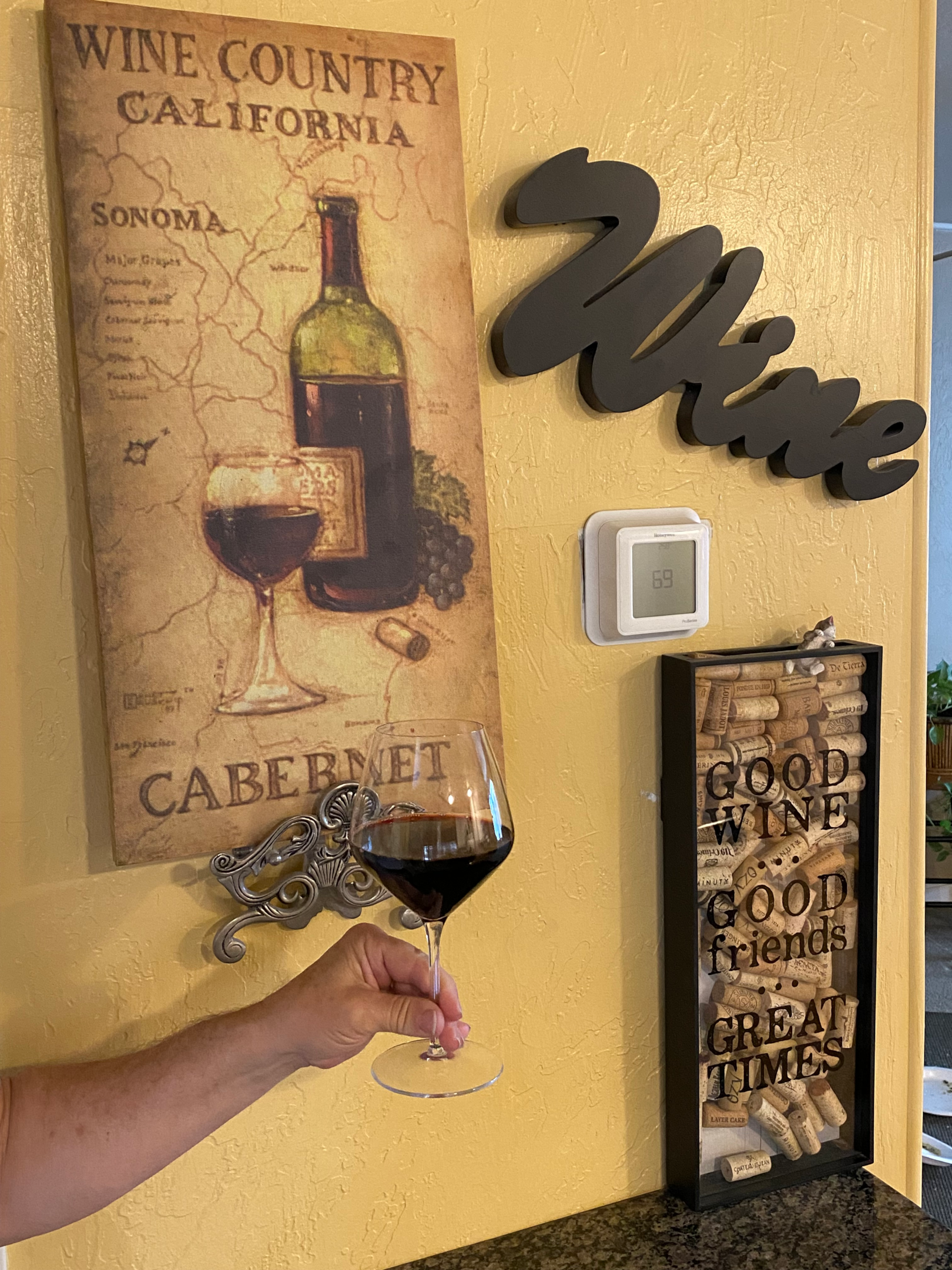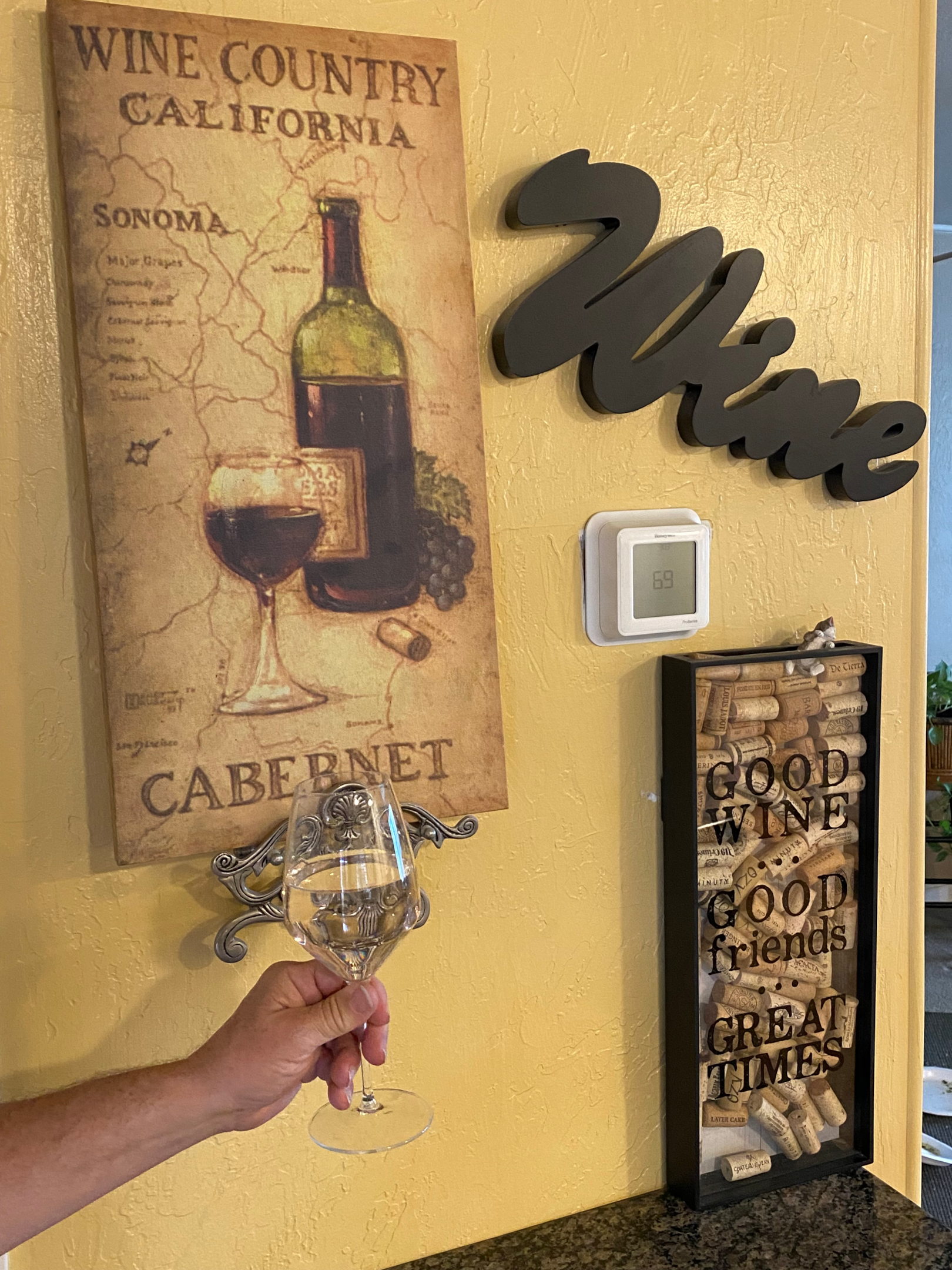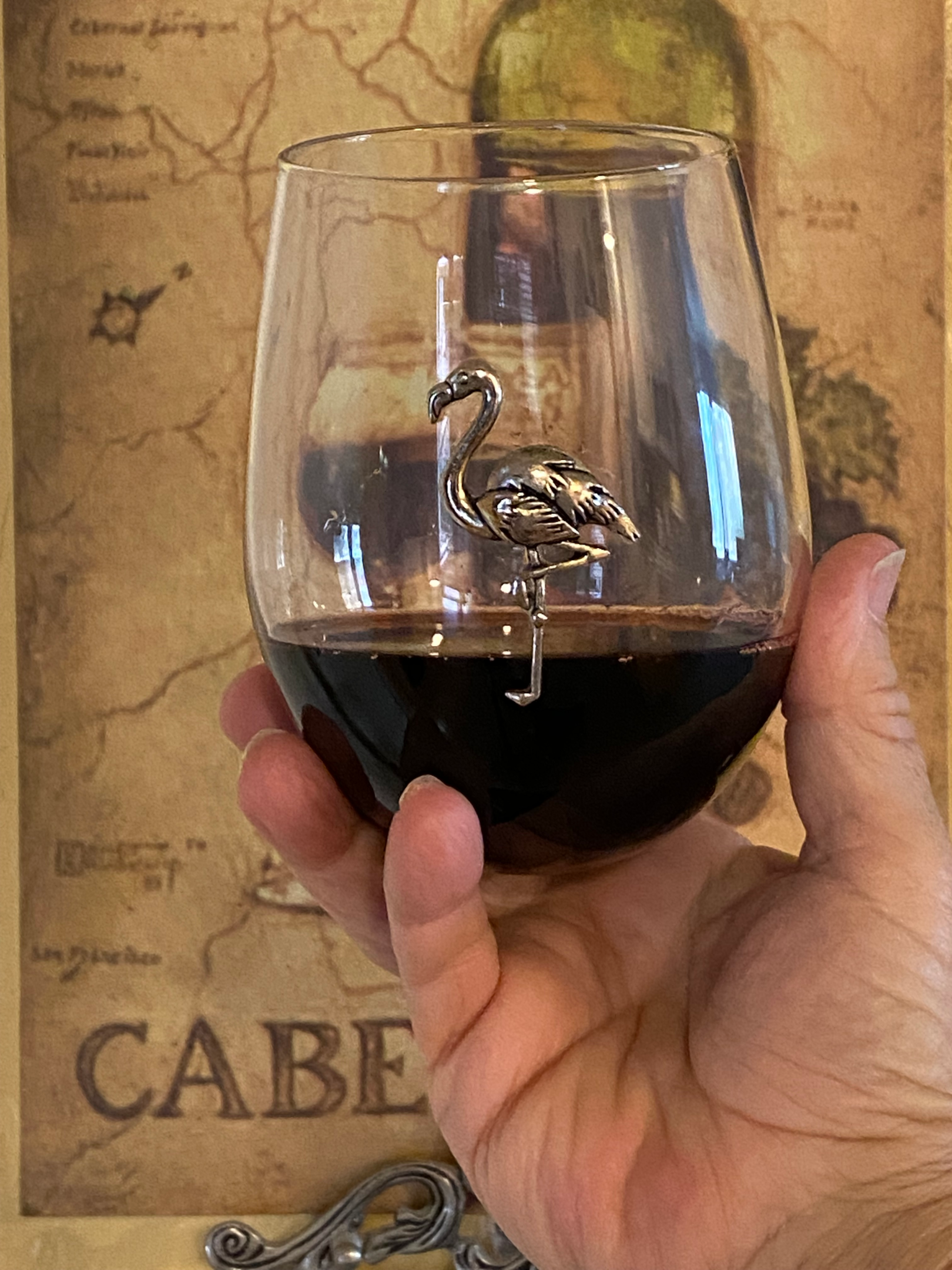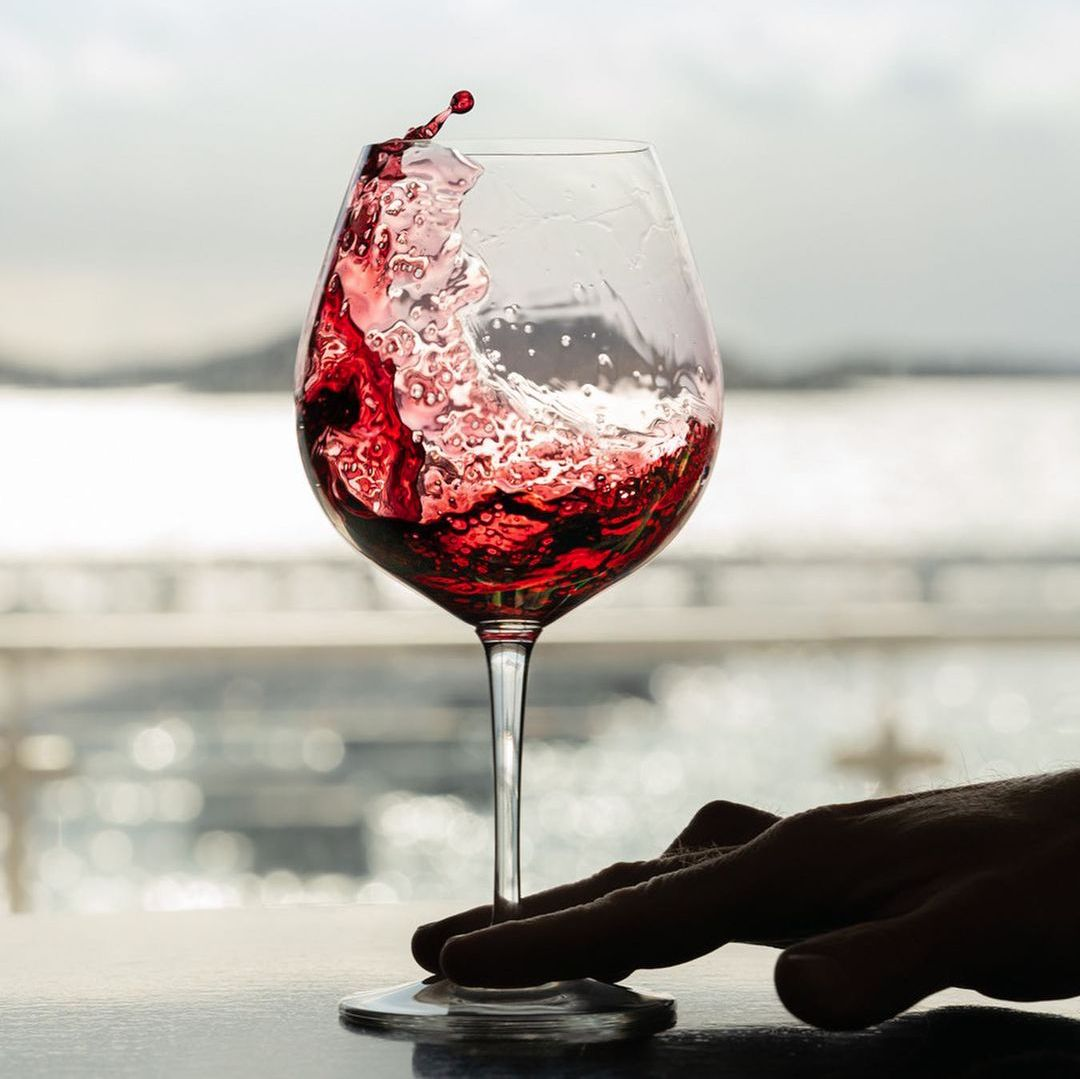When I first started to drink wine, I tried to do it the as I had seen people in the movies or on television. You know with hand clasped around the glass’s bowl. Perhaps the television and movie screens aren’t the best resource for learning the ropes. Because yes, there is a proper way to hold a wine glass—and it matters. So, let us fine-tune our skills, and enhance our wine experience. Here is everything you need to know to hold your next glass of wine like a pro.
How You Hold a Wine Glass - Does it Really Matter?
There are so many different wine glasses to choose from. Decorative, elegant, and so many different types to select from in size, shape, and of course price.
Did you know that there is a wine glass for just about every kind of wine?
Some basic wine glasses are for full-bodied red wine, light-bodied red wine, Rose or a spicy red wine, sparkling wine, light-bodied white wine, and fortified wines.
We will share more on the different types of wine glasses in a future article; "Why are there so many different types of wine glasses?"
Before learning how to properly hold your wine glass, and if it matters, let's look at the "whys" of holding your glass of wine. How you handle your glass helps you get the most out of your wine experience for three main reasons:
It Preserves the Wine’s Temperature
Here are some things to consider in holding your wine glass. Your hands—especially your palms—give off heat. Therefore, holding a wine glass with too much skin contact can alter the wine’s temperature, which is critical for bringing out a wine’s intended flavor profile and characteristics.
Determining a wine’s ideal temperature is not an exact science. Why this is true is temperature varies depending on the type of wine. That said, it is standard to serve white wines at cooler temperatures than red wines. For all wines, it is key to maintain a proper temperature for as long as possible. In many cases—unless you are in a cold region and your wine is literally surrounded by very chilly air, this means keeping your hands off the glass, especially the bowl of the glass, as much as possible.
It Keeps Things Clean
Your hands naturally carry oils. If you are eating with your fingers, they can also carry grease and other food remains. So, what does that mean for you and me? If you do not want those same oils or foods to end up on the bowl of your glass because it will alter how you perceive the wine in your glass, and you will also likely pick up those aromas as well. Remember what you detect with your nose (the wines aroma) impacts what you experience on your palate.
Mom & Pop Wines of California
How To Hold a Red Wine Glass
Hold all stemmed wine glasses (red, white, etc.) towards the base of the stem between your thumb, forefinger, and middle finger. You'll find that your other fingers will just rest on the base naturally. Oh! And don't worry, it's totally socially acceptable to swirl your wine. In fact, while swirling your wine may seem cool, it actually helps you detect more of the wine's aroma and helps you to enjoy the wine's flavor that much more.

How To Hold a White Wine Glass
You may have noticed that both white wine glasses and red wine glasses were mentioned. Remember, different wine glasses were created based on years of experience and how to enjoy a particular wine. The bowl, or the portion of the glass that actually holds the wine is of different sizes and shapes to enhance the wine tasting experience for a given wine. We will address this more in another future post, “Why so many different types of wine glasses?”
White wine glasses - The smaller the glass the more the wine is directed on the middle of your palate and the more heightened the expression of acid. While the bowl of the slightly larger white glass embraces and enunciates the richer, rounder aspects of full-bodied wines: like Chardonnays, and Viogniers, while also limiting the effects of higher alcohol on the nose.

Let's take a moment to consider some different ways to hold your wine glass. Yes, there is more than one way to do so. Let's take a look at how to hold a stemmed wine glass.
Is There More Than One Way to Hold a Wine Glass?
The simple answer is you can pretty much do what is comfortable for you. That being said, let’s take a look at a few methods of holding a wine glass, since you asked; “how to hold a wine glass.” Here are a few examples of how to hold a wine glass.
Thumb and Forefinger
Hold the glass towards the base of the stem, gripping between your thumb and your index finger. The rest of your fingers rest at the base. (See example above)
This method is probably the best for a comfortable feel and allows for easier swirling of the wine in your glass.
Stem Pinch
Clutch the glass towards the bottom of the stem. Imagine clutching that cup of coffee you just got going through the drive-through. Or maybe picture yourself gripping the handle of your favorite coffee mug.
Base Pinch
Use your thumb and forefinger to grip the glass around where the stem and the base meet.
You will see a lot of other wine drinkers using either the Base Pinch or the Stem Pinch.
Thumb on the Base
In a more challenging configuration, hold the glass at its base with your thumb on top and the side of your index finger on the bottom.

How to Hold Stemless Wine Glasses
-
What is the Proper way of holding a wine glass?
-
Hold stemless wine glasses at the base of the bottom. (see picture above)
-
-
Why do you hold a wine glass by the base?
-
As with any wine glass holding the stemless glass at the base reduces the influence you holding the glass has on the wine.
-
Holding a Stemless Wine Glass
When drinking from a stemless wine glass, the trick is to hold it near the bottom of the base. This way, the smudges are kept to the area farthest from the rim. Also, drink from the same spot, especially if you are wearing lipstick.
When stemless wine glasses first hit the market, wine enthusiasts weren't sure what to make of them. The design defied centuries of wine-drinking tradition, a notion of extreme importance in oenological culture. The sheer unconventionality of the glasses, however, matched many of the exciting New World attitudes of winemaking, such as synthetic corks or screw caps and bold, fruity New World wines from non-traditional varietals and blends. As winemaking entered a new age, so did the range of vessels from which wine lovers could drink it.
A stemless wine glass has the same shape. No Stem - Traditional stemware for wine is built on many conventions thought to enhance the experience of wine drinking.
Bowl shape varies for different types of wines in order to place the wines in the mouth along the taste buds most likely to perceive the wine's unique flavors. The size and shape of the rims direct aromas in the way most pleasing for the type of wine you are drinking. The material with which the glasses are made reflects the clarity and color of the wine.
The stem of a wine glass allows you to hold the glass without projecting the warmth from your hand through the bowl of the glass and warming the wine beyond ideal temperature. Stemless wine glasses do all of these things as well, except for the final item. They look like the bowl of traditional wine glasses but lack the stem. Instead, stemless wine glasses have a flat spot along the bottom of the bowl so you can set them carefully on a surface. Many varieties of stemless wine glasses exist for different types of wine, both red wines and white wines.
While I prefer to use a traditional style stemmed wine glass, after all swirling wine is a must for me. Still, I have several stemless wine glasses and find them handy when out on the patio working the grill. The flat bottom and the stability have saved many a glass from a shattering fate. So, a stemless wine glass has some advantages as well.
How To Hold a Champagne Flute
Remember, Champagne is meant a wine to drink best served chilled and cold. To hold a Champagne Flute, pinch the top of the stem between your thumb and forefinger. Your little finger should rest just above the base to ensure the crystal flute is steady.
While I am not personally a huge fan of sparkling wines, for a special occasion, a Champagne flute with bubbles is so fitting for the occasion. It adds just a little more festivity to the occasion.
The Champagne Flute allows you to hold your wine glass elegantly. Enjoying your favorite sparkling wine.
How to Hold a Champagne Coupe or Saucer
When holding a Champagne Coupe or Champagne Saucer, as with the flute you should pinch the stem in the same manner. Alternatively, you can hold the rim. Oh, and here is another helpful hint. Proper etiquette when pouring a glass of Champagne is to fill a coupe ¾ of the way, meaning you can hold the flute by the lip without warming the drink.
The flute style is typically the most popular glass shape for Champagne; it looks elegant and features a nice long stem making it easy for the hand; it's probably the most recognizable. The narrow flute is perfect for preserving the bubbles in your bubbly and the long stem stops you from warming the champagne with your hand. If you're serving up bubbly to a large group, opting for flutes is also a better use of tray space. Is the Champagne flute the only wine glass to use for your bubbles?
There are two types of champagne flutes: stemmed and stemless. Stemmed champagne flutes have a long stem that extends down from the base of the bowl, while stemless champagne flutes have no stem. Both types of glasses have a slender bowl that tapers to a small opening at the top.
There are three types of champagne glasses that best complement celebrations, such as the champagne coupe, flute, and tulip.

Summary – How to Hold a Wine Glass
Does wine really taste different in different glasses? Yes, the design of a wine glass can actually affect how a wine tastes.
For example, white wine glasses are generally smaller than red wine glasses. This why in this the case? The shape of the glass preserves floral aromas and helps maintain a cooler temperature. Full-bodied whites like Chardonnay are served in a glass with a bowl that is smaller than a red wine glass but larger than a light-bodied white wine glass.
Certain wine glasses perform better than others (there’s actually some science to back this up). That being said, what are the best wine glasses for you?
You can drink wine from whatever vessel you want, be it a wine glass, coffee mug, mason jar, or those plastic red cups you see in the wine section or your favorite grocery store. As a matter of fact, you can ditch the glass altogether and drink straight from the bottle.
I have enjoyed a wonderful Malbec produced by a Livermore Winery and winemaker Steven Kent Mirassou out of coffee mugs because that was all that was available, and it was a delightful wine even though it was presented in a less than conventional manner – it was simply a really good wine. However, using the right glass improves the taste of wine and the next time I visited one of Steven Mirassou’s Malbec it was even better in the right glass. Thank you, Steven!
Remember this, the wine glass you choose is how you will be holding a wine. Experiment, and enjoy your wine as you hold the wine glass of your choice.
Some of our posts contain affiliate links. If you click on an affiliate link and later make a purchase we may receive a small commission. Clicking on an affiliate link that earns a commission does NOT result in any additional charges to our readers or cost you anything extra. Mention of associated products/services/businesses within the content of the blog may or may not be noted as an affiliate in every reference. Money earned via affiliate links helps pay the fees to keep the website and blog posts up and running.



